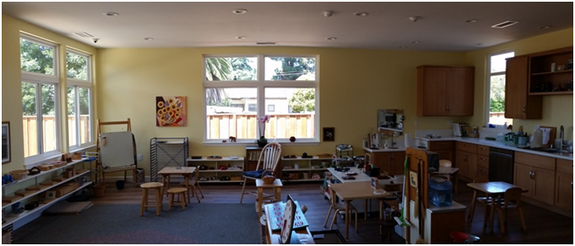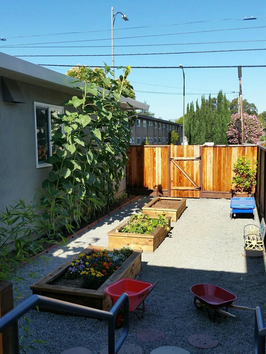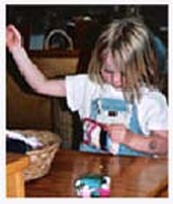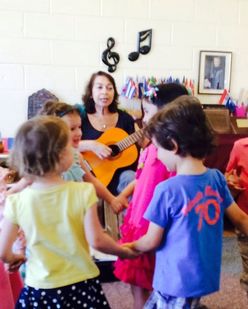History
San Jose Montessori School was founded in 1970 by Elizabeth Reinhardt. She remained at the helm until 1974, when she turned it over to Polli Soholt. Polli began working as a teacher at the school in 1970, and she remained with the program as Owner, Administrator and Teacher until 2010. At that time, Polli began her current career as an AMI Teacher Trainer and the school came under the ownership and leadership of Ilana Dover. Ilana became certified and came to San Jose Montessori School in the early 1980’s and worked with the children for a short time. She left to raise her daughter and pursue other interests, then returned to the school in 1999 as an Administrative Assistant. The following year she opened the second environment as the school expanded to two classrooms. She continued to work in the classroom as she took over the leadership role in 2010. Ilana worked in those capacities until her untimely death in early 2017.
Ilana’s husband, Greg Benton, is now the Owner of the school and Susan Fernandez is now the Director. Susan first came to San Jose Montessori School in 2000 and has continually worked with the children from that time to the present. During that time, she prepared herself for the Director responsibilities by working directly with Ilana and taking the required leadership courses. While in the Directorship role, Susan continues to work in the classroom with the children and other staff.
San Jose Montessori School was founded in 1970 by Elizabeth Reinhardt. She remained at the helm until 1974, when she turned it over to Polli Soholt. Polli began working as a teacher at the school in 1970, and she remained with the program as Owner, Administrator and Teacher until 2010. At that time, Polli began her current career as an AMI Teacher Trainer and the school came under the ownership and leadership of Ilana Dover. Ilana became certified and came to San Jose Montessori School in the early 1980’s and worked with the children for a short time. She left to raise her daughter and pursue other interests, then returned to the school in 1999 as an Administrative Assistant. The following year she opened the second environment as the school expanded to two classrooms. She continued to work in the classroom as she took over the leadership role in 2010. Ilana worked in those capacities until her untimely death in early 2017.
Ilana’s husband, Greg Benton, is now the Owner of the school and Susan Fernandez is now the Director. Susan first came to San Jose Montessori School in 2000 and has continually worked with the children from that time to the present. During that time, she prepared herself for the Director responsibilities by working directly with Ilana and taking the required leadership courses. While in the Directorship role, Susan continues to work in the classroom with the children and other staff.

The Montessori Classroom
The classroom is arranged to allow the children to find and take out the materials on which they wish to work. Materials are kept in specific places on low shelves throughout the room. There are several low tables as well as ample floor space for the children to use materials. There are 5 basic areas of study in a Montessori classroom: Practical Life, Sensorial, Language, Math, and Cultural Subjects. Following is a brief description of each area.
Practical Life • This area has activities which help the children learn how to care for themselves and their environment. For example, there are sewing activities, sweeping activities, food preparation, polishing activities and dishwashing, to name a few. This area is very attractive to the youngest children because there is so much water in use, and they love to use their independence skills to do these activities. In the process, they develop independence, concentration, muscular control and coordination.
Sensorial • These materials help the children categorize and refine their sensorial impressions. There are materials that focus on their visual perceptions (large, small, shape, color); materials that focus on their tactile impressions (hard, soft, rough, smooth, shape); materials that focus on their auditory impressions (loud, soft, musical tones); and materials that focus on their olfactory and taste perceptions. All these materials help them to become more precise and observant of their environments.
Language • This section of the classroom has materials to enhance vocabulary, learn about syllabification of words, learn the sounds of the letters, learn how to write letters, learn how to read, and learn the parts of speech. Children can be observed throughout the day practicing writing, learning new vocabulary, and using the moveable alphabets to compose words phonetically.
Math • In this area, we begin by helping the children master the numbers from 0 to 10. They will learn about quantity, symbol, and the sequence of numbers. After they have learned about these numbers, they will begin learning about the decimal system, again with materials they can manipulate. It becomes very clear to them that each category of numbers is 10 times the preceding category. This knowledge prepares them for addition, subtraction, multiplication, and division. Because of the manipulative nature of the materials, the children often comment on the quantity of a large number as opposed to the quantity of a small number. The oldest children also begin to learn their number facts, long before it is necessary to expend great amounts of mental energy to memorize them.
Cultural Subjects • These subjects include history, geography, botany, zoology, music, and art history. For example, the children learn the continents of the world by working on a puzzle map of the world. After they learn the names of the continents, they begin to learn the names of the countries. There are also flags of the countries they can identify, as well as the major land and water forms (lake, island, isthmus, strait, cape, bay, etc.). Children are fascinated with the different cultures of the world, and they can be introduced in the geography area.
Use of the Outdoor Environment

During the morning class time, children may choose to do gardening and other outdoor activities under the supervision of our Outdoor teacher. We spend a large amount of time in the garden with the children. They love to plant and care for the flowers, vegetables and trees that are part of the outdoor environment. This is a different experience than playing on the playground, and the children thoroughly enjoy and benefit from this contact with the natural world. Additionally, weather permitting, children usually spend 45 minutes to an hour as a group playing outside before and after lunch.
A Typical Day

The children are shown how to use the materials individually or in small groups. Once a child has had a lesson on a piece of equipment, he can take it out and work on it at any time, for as long as he wishes. When he is finished, he will return it to the shelf, ready for the next child. During the morning, there will be several children working entirely on their own, and some children working together in small groups, with or without an adult. At any given time, children will be painting pictures, writing words, scrubbing a table, eating snack, listening to the different tones of the scale of C, or working on subtraction. We are not concerned if a child practices writing most of the day, or sews for an hour, or goes from one math activity to another for the whole morning. Over time they will work in all parts of the classroom, and if the adults are concerned about introducing some new materials to a child, all that is necessary is to invite the child to a lesson.
At some point in the morning, one of the adults will read a story, which the children can join if they wish. At another time in the morning, some group singing will be offered, but again, they may join if they want, or they may continue with their other activities. We do not set specific times for these activities, we offer them when there seems to be a need or interest for them.
The Head Teacher will give new lessons throughout the morning, inviting children who are finished their work or who request a new lesson. All the lessons given are recorded so that the Teacher will know which children have had which lessons, hoping to give the children the lessons they need depending on the Sensitive Period (see more about this on the Montessori Page) they seem to be experiencing.
Toward the end of the morning, the children put away their activities and get ready to go out to the playground. After they play for a while, they come back inside for lunch. A small group of children from each classroom assist their Teacher in setting up lunch. The tables are set with cotton placemats, glass plates and tumblers, and child-sized utensils. After the children have washed their hands, they take all their food from their lunch boxes and place it on their plates. The children enjoy their meal with their friends and teachers. When the children are full, they re-wrap the food they have not eaten and take it home. When lunch is over, they go out again for a short play time.
After lunch, some of the children leave school, and the younger ones lay down for a nap. The older children (5 and 6 year-olds) return to the classroom for their extended day program. They are given more advanced lessons in the afternoon, and they often work in the garden and participate in some housekeeping chores. Each afternoon these children start their extended day period with the teacher reading a story from a chapter book. At the end of the extended day period, they either leave school or go into the All Day Montessori program. This program is directed by an AMI Montessori Teacher who works with the children until 4:00. The children who stay in the ADM program play outside, have a snack, and work with materials of their choice.
* The All Day Montessori program is limited to 12 children. The napping area is limited to 10 children.
At some point in the morning, one of the adults will read a story, which the children can join if they wish. At another time in the morning, some group singing will be offered, but again, they may join if they want, or they may continue with their other activities. We do not set specific times for these activities, we offer them when there seems to be a need or interest for them.
The Head Teacher will give new lessons throughout the morning, inviting children who are finished their work or who request a new lesson. All the lessons given are recorded so that the Teacher will know which children have had which lessons, hoping to give the children the lessons they need depending on the Sensitive Period (see more about this on the Montessori Page) they seem to be experiencing.
Toward the end of the morning, the children put away their activities and get ready to go out to the playground. After they play for a while, they come back inside for lunch. A small group of children from each classroom assist their Teacher in setting up lunch. The tables are set with cotton placemats, glass plates and tumblers, and child-sized utensils. After the children have washed their hands, they take all their food from their lunch boxes and place it on their plates. The children enjoy their meal with their friends and teachers. When the children are full, they re-wrap the food they have not eaten and take it home. When lunch is over, they go out again for a short play time.
After lunch, some of the children leave school, and the younger ones lay down for a nap. The older children (5 and 6 year-olds) return to the classroom for their extended day program. They are given more advanced lessons in the afternoon, and they often work in the garden and participate in some housekeeping chores. Each afternoon these children start their extended day period with the teacher reading a story from a chapter book. At the end of the extended day period, they either leave school or go into the All Day Montessori program. This program is directed by an AMI Montessori Teacher who works with the children until 4:00. The children who stay in the ADM program play outside, have a snack, and work with materials of their choice.
* The All Day Montessori program is limited to 12 children. The napping area is limited to 10 children.

